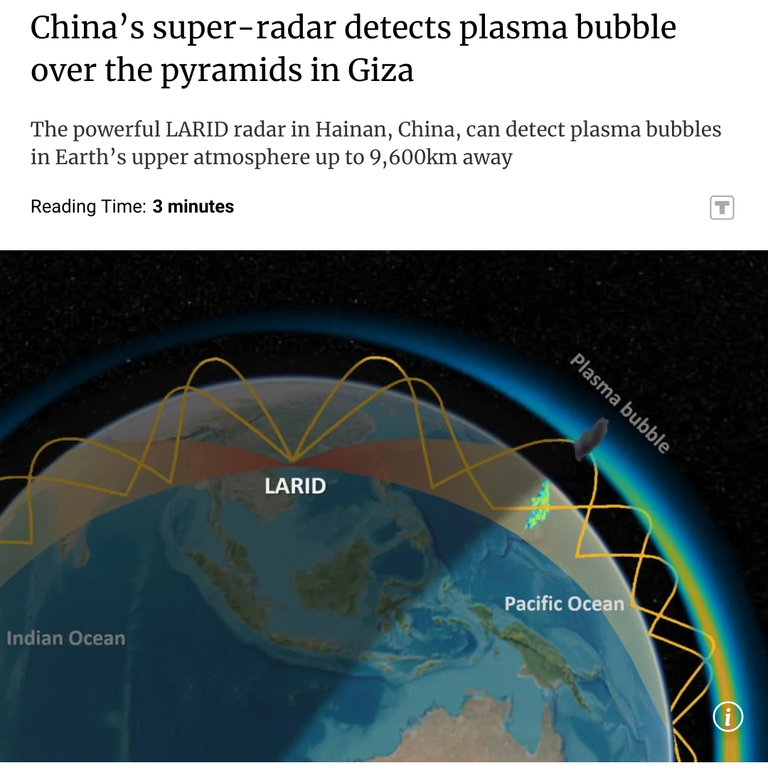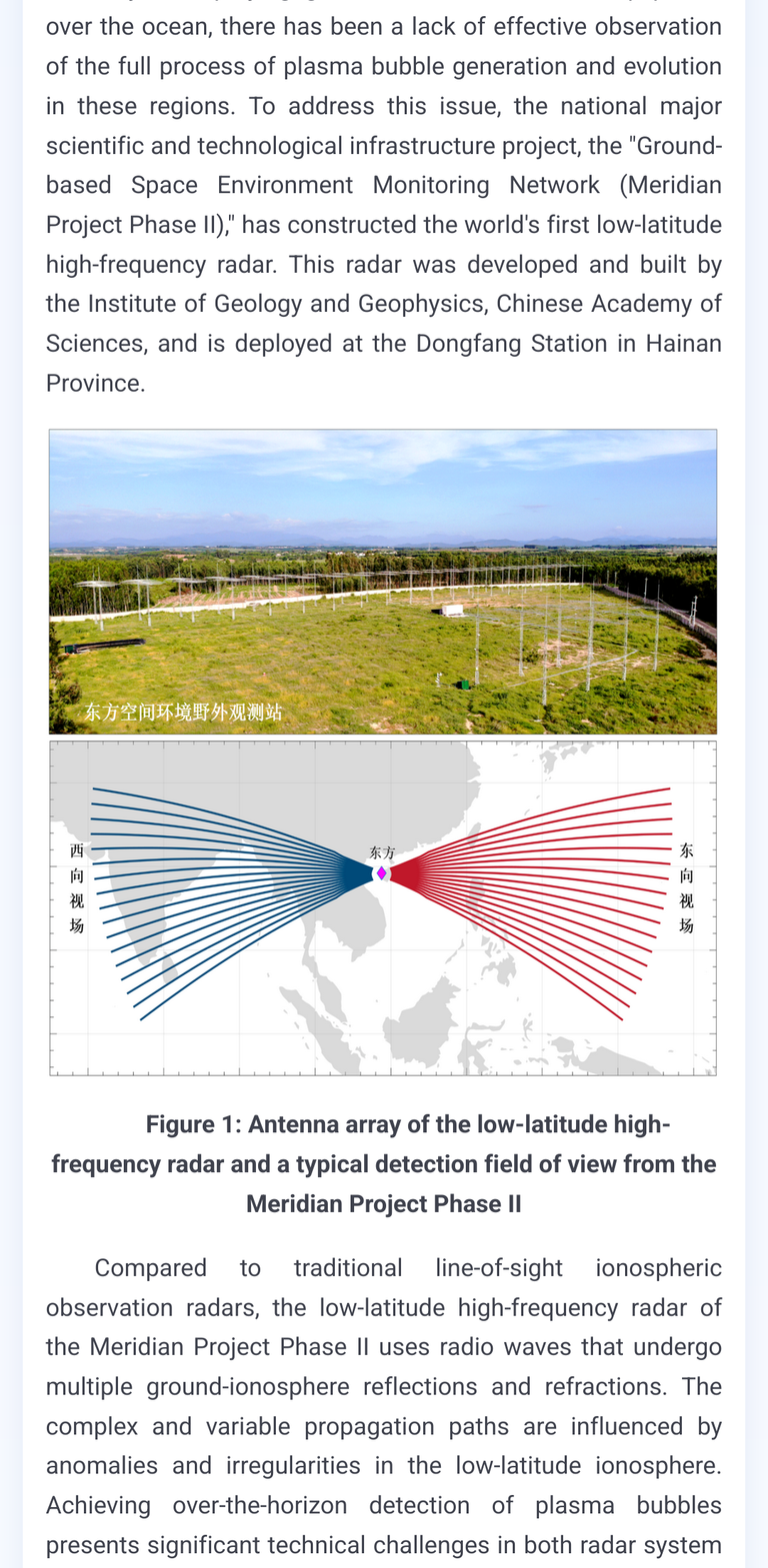China finds Plasma Bubbles over the Pyramids of Giza
While plasma is mostly being denied in mainstream science and media, I now found this:

https://interestingengineering.com/science/china-plasma-bubbles-giza-pyramids

With the aid of the world’s most powerful radar of its kind, Chinese scientists have detected plasma bubbles appearing over both the Egyptian pyramids and the Midway Islands, almost simultaneously.
Equatorial plasma bubbles are anomalous weather phenomena in low-latitude regions, caused by the sudden disappearance of a large number of charged particles in the ionosphere – part of the Earth’s upper atmosphere.
Resembling a bubble, this electron-depleted region can play havoc with GPS positioning devices and can also interrupt satellite communications. And they can reach sizes that are hundreds of kilometres in diameter.
But thanks to the low latitude long range ionospheric radar (LARID), built last year, China has become the first country in the world able to detect these plasma bubbles on radar.


Abstract
The Low lAtitude long Range Ionospheric raDar (LARID), which consists of two high frequency (HF) radars looking toward the east and west of Hainan Island, respectively, has been developed and installed at Dongfang (19.2°N, 108.8°E, dip lat. 13.8°N), China. This paper describes the system design of LARID and its first observational results of equatorial plasma bubble (EPB) irregularities. The antenna array of LARID is composed of a west-looking array and an east-looking array. Each array consists of 20 log-periodic antennas for transmission and reception and 4 log-periodic antennas for interferometry, and has a beam steering capability in the azimuth angles of ±24° due the boresight pointing east (or west). Observational results show that the LARID is capable of detecting backscatter echoes from EPB irregularities and the ground, with a distance of 4,000 km or more away from Hainan Island. Multiple EPB structures were continuously observed on 17 April 2023, with eastward drifts ranging between 70 and 130 m/s. Based on ray tracing simulations, the backscatter echoes of EPB irregularities were due to the 0.5-hop and 1.5-hop propagation modes. The distances between the successive EPB structures were estimated ranging between 500 and 900 km in longitude. The LARID observations, together with other instruments in the East and Southeast Asian sector, provided a clear picture of longitudinal variation of EPBs in 90–125°E. It is expected that the LARID will provide an important tool to study the generation and evolution of EPBs and their short-term prediction in East and Southeast Asia.
Key Points
A Low lAtitude long Range Ionospheric raDar (LARID) operating at 8–22 MHz has been developed and installed at Hainan Island, China
First long-range observations of equatorial plasma bubble (EPB) irregularities and their zonal drifts by the LARID were presented
The LARID is expected to play an important role in the study of EPB and its short-term forecasting in East and Southeast Asia
https://agupubs.onlinelibrary.wiley.com/doi/10.1029/2023JA032099?af=R

https://www.meridianproject.ac.cn/rp/info/2024/2062.html
Not much more to add, I've written endless posts about the topic.
Just take a look into my profile. On Hive, everything is archived forever ;)
So far.
Ich kann die Dimension gar nicht erfassen.
I need to take a look on that!